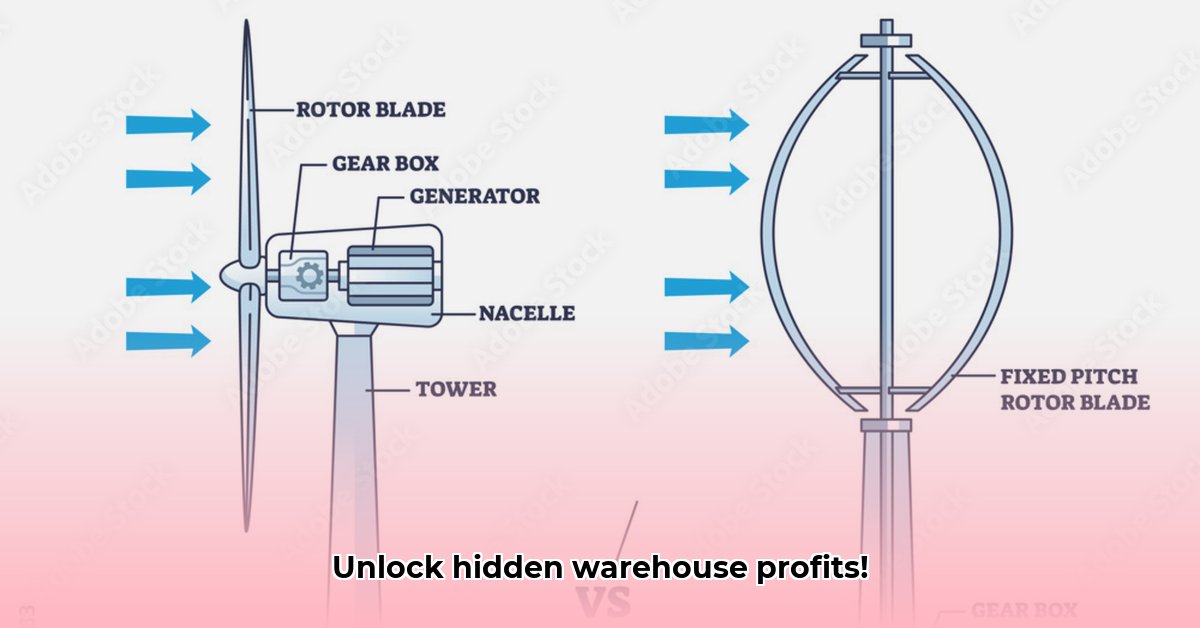Running out of warehouse space and seeing your profits shrink? This guide reveals how to leverage vertical space in your warehouse to boost efficiency and profitability. From simple adjustments to high-tech solutions, discover practical strategies to unlock hidden potential, transform underutilized areas, and achieve a significant competitive edge. For more on creating extra floor space, check out this guide on mezzanine floors.
Vertical Space Optimization Strategies: Unlocking Hidden Potential
Warehouse space is a valuable asset. Utilizing vertical space isn’t just about stacking higher; it’s about optimizing warehouse functionality for cost savings and efficiency gains. Let’s explore how to unlock the hidden potential above your warehouse floor—an essential factor in warehouse inventory management and supply chain efficiency.
Space Audit: Taking Stock of Your Warehouse
Before implementing changes, a clear understanding of your current space is crucial. Here’s a step-by-step guide to conducting a thorough space audit, which is essential for efficient warehouse layout:
- Spotting the Wasted Space: Identify underutilized areas and inefficient storage placements. Are aisles wider than necessary? Are there areas accumulating dust or unused equipment gathering cobwebs?
- Measuring Up: Determine the maximum usable height, considering building structure, fire suppression systems, and equipment capabilities. This is key in warehouse dimension analysis. Document load-bearing capacities of floors and potential weight restrictions for upper levels.
- Mapping the Flow: Analyze inventory movement and traffic patterns to identify bottlenecks and optimize shelving and storage solutions. Understanding your warehouse inventory management system and how different products flow through it is crucial for future optimization.
- Document Everything: Record measurements, capture photos, and create detailed sketches to develop a comprehensive warehouse map. Include notes on lighting, temperature, and any environmental factors affecting storage. This thorough documentation is your roadmap to a more strategically optimized and efficient warehouse.
Smart Strategies for Using Your Vertical Space Wisely
Employing effective vertical space utilization strategies can drastically increase storage capacity and improve operational efficiency. Consider these options and their potential to improve logistics optimization and material handling efficiency:
- High-Bay Racking:
- Pros: Maximizes space efficiency for dense vertical storage. With proper warehouse safety protocols in place, it improves inventory accessibility and can accommodate a wide variety of pallet sizes and weights.
- Cons: Requires specialized handling equipment like reach trucks or automated cranes and represents a substantial upfront investment. May require modifications to the building’s structural support and fire suppression systems.
- Mezzanines:
- Pros: Creates extra floor space at a relatively low cost. Installation is often faster and less disruptive than expanding the existing building.
- Cons: May reduce headroom, requires structural planning to ensure stability, and may necessitate additional lighting and HVAC considerations. Building codes may require additional exits or fire suppression systems.
- Automated Storage and Retrieval Systems (AS/RS):
- Pros: High efficiency suitable for high-volume warehouses, enhancing warehouse automation. Reduces labor costs, improves order accuracy, and can operate in controlled environments (e.g., cold storage).
- Cons: High initial investment and specialized maintenance are necessary. Requires significant integration with existing WMS and can be disruptive to implement.
- Vertical Lift Modules (VLMs):
- Pros: Ideal for storing and retrieving small parts efficiently and saving space. Provides secure storage, reduces picking errors, and improves ergonomics for warehouse staff.
- Cons: Higher cost and best suited for particular types of items with consistent dimensions. May require longer retrieval times for certain items compared to other automation solutions.
- Narrow Aisle Racking:
- Pros: Increases storage capacity within the same footprint by reducing aisle widths. Allows for greater storage density compared to traditional racking systems.
- Cons: Relies on specialized equipment and trained operators and might offer less flexibility in terms of storage configurations. Requires very flat and level floors for safe operation of specialized forklifts.
- Dynamic Storage Systems:
- Pros: Speeds up order picking for frequently accessed items. Improves inventory turnover and maximizes space utilization by storing items based on their velocity.
- Cons: High initial costs and requires careful integration with existing systems. May not be suitable for all types of inventory due to size or weight limitations.
- Multi-Tier Shelving:
- Pros: Cost-effective solution for maximizing vertical space for smaller items. Easy to install and adaptable to different storage needs.
- Cons: Requires manual handling of items and may not be suitable for heavy or bulky products. Accessibility to upper levels may be limited without ladders or platforms.
Technology Integration: Increasing Efficiency
Technology is essential in optimizing vertical space. Implement a Warehouse Management System (WMS) to manage inventory, strategically assign storage locations, track expiration dates (for perishable goods), and streamline fulfillment processes. Integrate Radio-Frequency Identification (RFID) for real-time visibility, improving stock accuracy and operational efficiencies. Consider using warehouse control systems (WCS) to coordinate the different automated systems and streamline workflow.
Implementation and Best Practices: Optimizing Processes
Transforming your warehouse requires careful planning and execution:
- Design and Planning: Collaborate with experts in material handling, structural engineering, and safety compliance. Tailor your strategy to specific needs, focusing on optimized warehouse layout design and future scalability.
- Safety First: Prioritize safety by adhering to OSHA regulations, local building codes, and industry best practices. Conduct regular safety audits and provide comprehensive training on equipment operation, fall protection, and emergency procedures.
- Training Your Team: Invest in comprehensive training programs for all warehouse staff on new equipment, systems, and safety protocols. Provide ongoing refresher courses and address any knowledge gaps.
- Continuous Monitoring and Adjustment: Track key metrics such as storage density, order fulfillment time, inventory accuracy, and labor costs to optimize systems and achieve continuous improvement. Use data analytics to identify areas for further refinement and process optimization. This is key in supply chain management.
- Phased Implementation: Implement changes in phases to minimize disruption to warehouse operations. Start with a pilot project in a specific area of the warehouse before rolling out changes throughout the entire facility.
Real-World Success Stories
Several companies have effectively optimized their warehouse spaces. Company A, a pharmaceutical distributor, reduced order fulfillment time by 40% and increased picking accuracy by 25% after implementing AS/RS. Company B, an e-commerce retailer, increased storage capacity by 60% and reduced storage costs by 30% using high-bay racking and a redesigned warehouse layout. These examples show the tangible benefits of effective vertical space optimization. A beverage company improved inventory rotation and reduced spoilage by 15% through implementing dynamic storage systems.
The Bottom Line: Maximizing Warehouse Efficiency
Combine strategic planning, appropriate technology, a well-trained team, and a commitment to continuous improvement for lasting success, leading to greater efficiency and higher profits. Continuously assess and refine processes based on performance data and changing business needs for sustained improvements.
Calculating ROI on Automated Warehouse Systems: Investments and Metrics
Key Takeaways:
- Significant space savings (15-85%) are achievable through vertical storage solutions, contributing to efficient warehouse storage solutions.
- Automation boosts productivity (15-30%) and reduces labor costs.
- Effective Warehouse Management Systems (WMS) are crucial for optimization, improving logistics technology.
- Calculating ROI on Automated Warehouse Systems requires careful cost-benefit analysis that considers direct and indirect benefits.
- Strategic planning, phased implementation, and ongoing monitoring are key to success, ensuring effective warehouse operations.
Assessing Your Current Warehouse Space (Revised)
Before diving into solutions, a clear understanding of your existing space is needed. This involves a thorough audit and is key in warehouse inventory control:
- Inventory Mapping: Document current storage locations, inventory flow, and product dimensions. Identify bottlenecks, areas of congestion, and underutilized space.
- Height Measurement: Precisely measure vertical space, accounting for obstructions such as lighting fixtures, pipes, sprinkler systems, and support beams.
- Capacity Analysis: Calculate current storage capacity, comparing it to your present and projected future needs to highlight limitations, inefficiencies, and future requirements. Consider seasonal fluctuations and anticipated growth.
Strategies for Vertical Space Maximization (Revised)
Several strategies can unlock unused vertical space, each with its own pros and cons:
| Strategy | Pros | Cons | Applicability |
|---|---|---|---|
| High-Bay Racking Systems | High storage density, efficient use of vertical space, and can accommodate a wide range of pallet sizes and weights. | High initial investment, specialized equipment needed, and potential structural modifications required. | Large volume, palletized goods, enhancing material handling systems. Effective for industries with consistent product dimensions. |
| Mezzanines | Creates additional floor space at a relatively low cost, faster installation than building expansion, and can be used for storage, offices, or light assembly. | Structural considerations, potential for load limitations, and potential code compliance issues (e.g., fire exits). | Medium-volume storage, offices, or break areas needed, improving warehouse design. Adaptable to different uses, |
- Kitchen tiling wall: Elevate your kitchen with stylish wall tiles - December 16, 2025
- Gray Kitchen Backsplash Tile: Ideas for a Stylish Upgrade - December 14, 2025
- Backsplash For Gray Cabinets: Choosing the Right Backsplash Style - December 13, 2025









